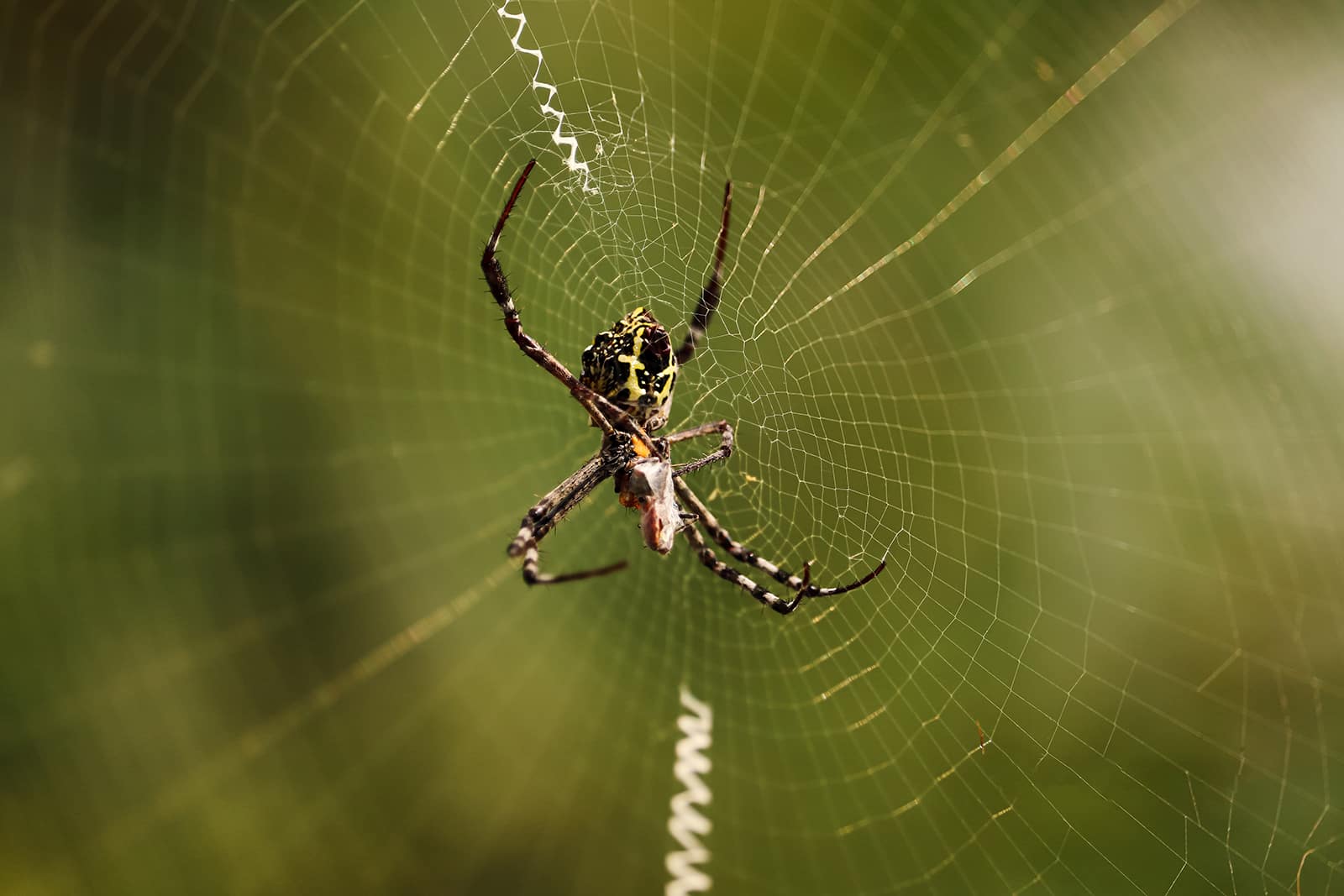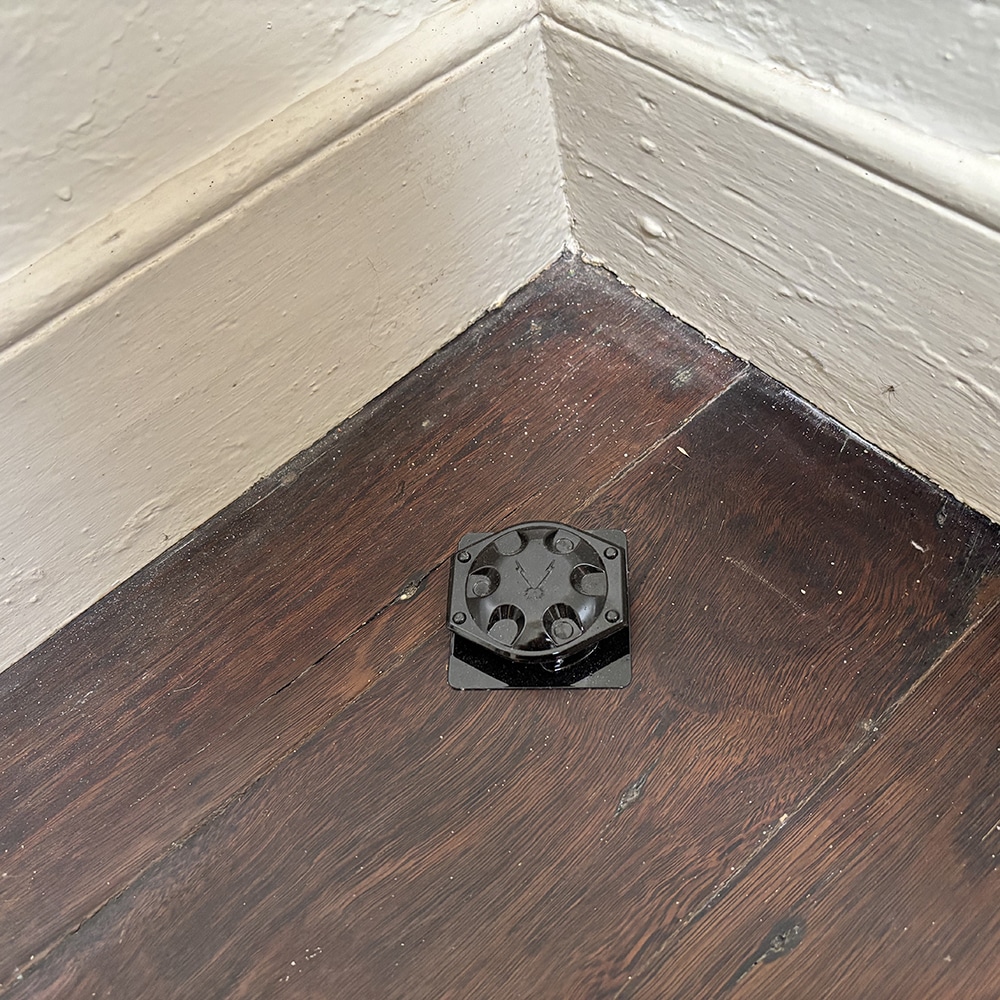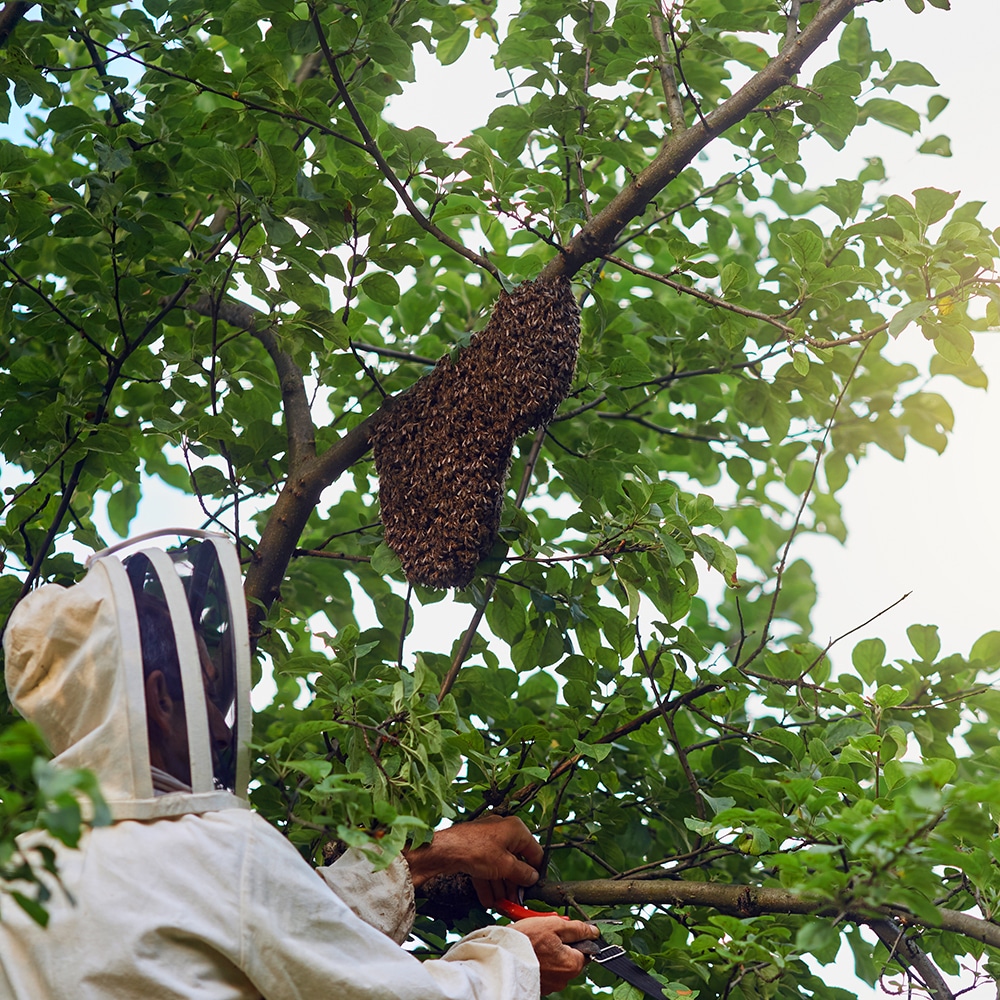
Why Do Spiders Come Back And Why
Why Do Spiders Come Back And Why On The Central Coast NSW. Responsive Proactive Solutions. Detail-focused for lasting results. Call Adam on 0431 222 894
Looking for the Best Cockroach Baits and Traps for Effective Control? You’re in the right place. Here at Vital Pest Control, we offer reliable and trustworthy solutions tailored for the Central Coast NSW. Let’s dive into the best methods to tackle those pesky critters.
How do cockroach baits work?
Cockroach baits lure pests with tempting scents. They ingest the poison, taking it back to their nests. This proactive solution effectively spreads to kill more roaches over time.
What is the best bait for cockroaches?
Gel baits stand out as the best choice. They combine strong attractants with potent poison, ensuring detail-focused, lasting results. Easy to apply, they fit into hard-to-reach spots, making them reliable and trustworthy.
How to properly place cockroach traps
Place traps near moist areas, under sinks, and behind appliances. These spots are cockroach hotspots. Correct placement increases the traps’ effectiveness, providing responsive proactive solutions.
How long does it take for bait to kill cockroaches?
Baits usually take a few days to a week to reduce populations. Patience is key. Consistent use ensures complete control, offering lasting peace of mind.
Are homemade cockroach baits effective?
Homemade baits can work but lack the strength of commercial options. While cheap, they may not provide the comprehensive control needed for larger infestations.
Why gel baits are more effective than sprays
Gel baits target cockroaches directly, unlike sprays which often miss hidden pests. Gels ensure detailed, targeted application, proving more effective in long-term control.
Do sticky traps help reduce cockroach infestations?
Sticky traps catch roaches, providing insights into activity levels. They’re best used alongside baits for a comprehensive plan, offering detail-focused results.
Where should you place cockroach bait stations?
Place bait stations near entry points, in dark corners, and along walls. Proper placement boosts effectiveness, helping to achieve reliable results.
Want more help? Contact us today and discover how we can assist you with the best cockroach baits and traps for effective control. We’re here to ensure your home stays pest-free.

Cockroach baits offer an effective solution for pest management in Central Coast, NSW. These baits attract cockroaches, delivering a potent blow to infestations. Understanding how they work helps in selecting the best option for your needs.
Attraction Through Scent
Cockroach baits use food aromas to lure these pests. The enticing scent mimics food, drawing cockroaches out of hiding. Once attracted, they consume the bait, which contains a slow-acting poison. This delay ensures they return to their colony, spreading the poison to others.
Poison Transmission
The bait’s poison isn’t lethal immediately. Cockroaches ingest it and continue their activities, allowing the poison to spread. As cockroaches groom each other or share food, they pass on the toxin. This secondary poisoning affects a significant portion of the colony over time, reducing numbers effectively.
Placement Strategy
Strategic placement of baits increases effectiveness. Positioning them in areas with high cockroach activity maximises contact. Common spots include kitchen corners, under appliances, and near waste bins. Regularly checking and refreshing baits ensures continuous attraction and poison distribution.
With strategic use, cockroach baits provide a reliable method for controlling infestations in homes and businesses across Central Coast, NSW. Their ability to lure and poison, coupled with smart placement, makes them a vital tool in pest control.
Cockroaches are notorious pests, often invading homes and businesses in search of food and shelter. For those on the Central Coast of NSW, finding the best bait for cockroaches is essential for maintaining a pest-free environment. Selecting the right bait can be the difference between a minor inconvenience and a full-blown infestation. Let’s explore the most effective baits available for tackling these resilient insects.
Gel Baits: A Sticky Solution
Gel baits have become a popular choice for cockroach control. These gels contain potent attractants that lure cockroaches out of hiding. Once ingested, the active ingredient in the gel disrupts their nervous system, ultimately eliminating the pest. Easy to apply in cracks and crevices, gel baits are particularly effective in reaching cockroaches in hard-to-access areas.
Bait Stations: Discreet and Effective
Bait stations offer a contained method of extermination. These small, plastic enclosures are pre-filled with bait, making them convenient and mess-free. Cockroaches enter the station, consume the bait, and soon meet their demise. Bait stations are ideal for kitchens and bathrooms, where cockroaches are most likely to gather.
Powder Baits: Long-lasting Impact
Powder baits provide a versatile option for pest control. These baits can be dusted in areas where cockroaches frequent, such as behind appliances or along baseboards. The powder clings to the cockroach’s body, transferring poison when they groom themselves. With their long-lasting impact, powder baits are a strategic option for ongoing cockroach management.
Ensuring effective cockroach control on the Central Coast NSW involves strategic placement of traps. Properly placed traps can significantly reduce infestations by targeting high-traffic areas and breeding sites. Understanding the best locations and methods for trap placement is crucial for optimum results.
Identify High-Traffic Areas
To effectively place cockroach traps, start by identifying high-traffic areas. Cockroaches are often found near food sources, water, and shelter. Kitchens, bathrooms, and basements are common hotspots. Placing traps in these areas increases the chances of catching more cockroaches. Look for signs of activity such as droppings or egg cases to pinpoint prime locations.
Utilise Corners and Edges
Cockroaches tend to travel along edges and corners. Position traps along walls, under sinks, or near appliances where these pests often roam. This method takes advantage of their natural tendency to follow structural lines, making it more likely for them to enter the traps.
Ensure Safe and Secure Placement
Place traps in areas that are safe from pets and children to avoid accidental contact. Ensure the traps are secure and won’t be disturbed by daily activities. Keeping them stable increases effectiveness and safety, allowing for uninterrupted trapping.
Understanding how long it takes for bait to kill cockroaches can help manage expectations and improve pest control strategies. For residents on the Central Coast NSW, using cockroach bait effectively can be a game-changer in keeping these persistent pests at bay.
Immediate Effects of Cockroach Bait
When cockroaches consume bait, the effects aren’t immediate. Typically, it takes a few hours for the bait to start affecting their nervous system. This delayed action allows cockroaches to return to their nests, spreading the poison to others through contact and sharing food.
Timeframe for Visible Reduction
After initial ingestion, you might start noticing a reduction in cockroach activity within 24 to 48 hours. During this period, the bait effectively works its way through the cockroach population, gradually reducing numbers. However, complete eradication may take a week or longer, depending on the infestation size.
Factors Influencing Bait Effectiveness
The speed at which bait kills cockroaches depends on several factors, including the bait’s active ingredient, placement, and overall infestation level. Properly positioning bait in high-traffic areas and ensuring it remains fresh and appealing can significantly enhance its effectiveness.
Homemade cockroach baits might seem like a cost-effective solution, but their effectiveness can vary. Many households on the Central Coast NSW explore these DIY methods to tackle cockroach issues. While they can help to some extent, understanding their limitations and benefits is crucial.
Ingredients and Attractiveness
Common homemade cockroach baits often use sugar, flour, and boric acid. These substances attract cockroaches due to their sweet smell and texture. However, the effectiveness depends on the right mix. Too much boric acid can repel them, making the bait useless.
Effectiveness and Limitations
Homemade baits can kill individual cockroaches effectively but might not address large infestations. DIY methods lack the potency and reach of commercial products. Professional baits are designed to target entire colonies, ensuring a more comprehensive solution.
Safety Considerations
While boric acid is a common ingredient, it’s important to handle it carefully. Ingesting or inhaling too much can pose health risks to pets and children. Homemade baits should always be placed out of reach to ensure safety.
In summary, while homemade cockroach baits offer a starting point, they often lack the efficiency of commercial options. Considering professional pest control in Central Coast NSW ensures more reliable and lasting results.
On the Central Coast of NSW, effective pest control is crucial, especially when battling resilient pests like cockroaches. Gel baits have emerged as a superior solution compared to traditional sprays. They offer targeted delivery and longer-lasting effects. Understanding why gel baits outperform sprays can help you make informed decisions in pest management.
Targeted Application
Gel baits allow for precise placement where cockroaches hide, like cracks and crevices. This accuracy ensures that the bait reaches the insects directly, making it more effective. In contrast, sprays often disperse chemicals widely, which can miss crucial hiding spots. By targeting specific areas, gel baits minimise chemical exposure and maximise pest elimination.
Long-Lasting Effects
The longevity of gel baits sets them apart from sprays. While sprays dissipate quickly, gel baits remain active for extended periods. This persistence means that even if cockroaches don’t immediately consume the bait, it remains available as a food source, continuing to attract and kill them over time. This extended action reduces the need for frequent reapplication, saving time and effort.
Reduced Resistance
Cockroaches often develop resistance to sprays due to overuse. Gel baits contain ingredients specifically designed to combat resistance, ensuring continued effectiveness. By rotating different bait formulations, pest control professionals can outsmart these adaptable pests. This adaptability makes gel baits a valuable tool in the persistent fight against cockroaches.
Sticky traps are a popular tool in the battle against cockroach infestations, especially for those living on the Central Coast of NSW. These traps offer a straightforward approach to monitoring and controlling these pesky insects. But how effective are they really?
Understanding Sticky Traps
Sticky traps work by using a strong adhesive to capture cockroaches as they scuttle across the trap’s surface. Unlike chemical baits, these traps don’t kill the roaches but immobilise them, making it easier to identify infestation hotspots in your home. While they are not a standalone solution, they can effectively complement other pest control methods.
Benefits of Using Sticky Traps
One of the main advantages of sticky traps is their non-toxic nature. This makes them safe to use around children and pets. They also provide immediate visual evidence of cockroach activity, allowing for quick identification of problem areas. This can help guide targeted treatments, enhancing the overall effectiveness of your pest control strategy.
Limitations to Consider
While sticky traps can capture and monitor roaches, they don’t eliminate infestations on their own. They need to be used alongside other methods, like baits or professional pest control services, to effectively reduce cockroach populations. Regular monitoring and maintenance of traps are also essential for optimal results.
Placing cockroach bait stations effectively is crucial for managing infestations. Knowing where to position these traps can significantly enhance your pest control efforts on the Central Coast of NSW.
Near Entry Points
Position bait stations near entry points such as doors, windows, and any visible cracks. These areas are common access routes for cockroaches entering your home. By placing traps here, you intercept them early, reducing their chance to spread inside.
In Kitchen Areas
Focus on kitchen areas where food is present. Place stations under sinks, behind appliances, and in cupboards. Cockroaches are drawn to food, water, and warmth, making kitchens prime locations for bait stations. This placement ensures you target cockroaches where they search for sustenance.
In Dark, Humid Areas
Cockroaches thrive in dark, humid areas. Place bait stations in basements, bathrooms, and laundry rooms. These hidden spots often go unnoticed but are prime cockroach habitats. Effective placement here can reduce population quickly.
Along Walls and Corners
Cockroaches typically move along walls and corners. Position bait stations along baseboards and in corners of rooms. This approach takes advantage of their natural movement patterns, increasing the likelihood of them encountering the bait.
Keeping cockroach infestations in check is crucial for a healthy home environment, especially on the Central Coast of NSW. Cockroach baits offer an effective solution, but knowing when to replace them is key to maintaining their efficacy.
Understanding Bait Lifespan
Cockroach baits usually last between three to six months, depending on environmental conditions and infestation levels. Humidity, temperature, and the presence of other food sources can impact their longevity. Regular monitoring ensures baits remain effective in attracting and eliminating cockroaches.
Signs It’s Time to Replace
Check baits regularly for signs of wear or depletion. If you notice fewer bait remnants or increased cockroach activity, it’s time for a change. Replacing baits ensures continuous protection and control over infestations, preventing cockroaches from regaining a foothold in your home.
Seasonal Considerations
Consider seasonal changes when scheduling bait replacements. Warmer months often see increased cockroach activity due to their breeding patterns. During these times, it may be necessary to replace baits more frequently to maintain optimal control.
Professional Advice
Consulting pest control professionals can provide tailored advice for your specific situation. Experts can recommend the best bait types and replacement schedules based on local conditions and infestation levels, ensuring your home remains cockroach-free.
When dealing with cockroach infestations on the Central Coast of NSW, many wonder if store-bought baits can tackle severe problems. While these products promise quick solutions, their effectiveness depends on several factors. Understanding these can help determine if they’re the right choice for your pest control needs.
Understanding Store-Bought Baits
Store-bought baits are popular due to their convenience and accessibility. They contain active ingredients designed to attract and poison cockroaches. While effective for minor infestations, their impact on severe cases often falls short. The reason lies in their limited reach. Cockroaches hide in cracks and crevices, areas where baits might not penetrate fully.
Addressing Severe Infestations
Severe infestations require a comprehensive approach. Relying solely on store-bought baits may not suffice. These products are part of a larger strategy involving sanitation and environmental changes. Professional pest control services offer tailored solutions, ensuring all cockroach hiding spots are targeted effectively. Such services provide more potent treatments, often essential for tackling extensive infestations.
The Role of Professional Pest Control
Professionals offer expertise that goes beyond what store-bought solutions can achieve. They assess the infestation’s extent, identify entry points, and apply treatments accordingly. This thorough approach ensures long-term results, reducing the likelihood of re-infestation. For residents on the Central Coast, employing a professional pest control service like Vital Pest Control can be a wise investment to manage severe cockroach problems effectively.
When dealing with cockroaches on the Central Coast of NSW, many people turn to cheap traps as an easy fix. However, these budget traps often fail to deliver the desired results, leaving homeowners frustrated and pests unchecked.
Quality Matters More Than Price
Cheap cockroach traps are often made with inferior materials that break easily or become ineffective quickly. These traps may not hold up against the persistent nature of cockroaches. Investing in quality traps ensures durability and effectiveness, reducing the need for frequent replacements.
Limited Effectiveness
Budget traps often lack the necessary bait quality to attract and eliminate cockroaches effectively. Without proper bait, cockroaches won’t be lured into the trap, allowing infestations to continue growing unchecked. Opting for traps with proven, high-quality baits ensures better control and management of these pests.
Hidden Costs of Cheap Traps
While cheap cockroach traps may seem like a cost-effective solution initially, they can lead to larger expenses over time. Ineffective traps mean prolonged infestations, potentially causing greater damage to your property and leading to expensive repairs or professional pest control interventions. Investing in reliable traps can save money and hassle in the long run.
Cockroaches are notorious for their resilience and adaptability, making them a common pest challenge. One question often arises: Can these critters become resistant to baits? Understanding cockroach behaviour and biology is key to effective pest control on the Central Coast of NSW.
The Adaptability of Cockroaches
These insects have survived for millions of years, partly due to their incredible adaptability. When exposed to baits containing toxins, some cockroaches may develop resistance over time. This resistance occurs as the pests that survive exposure propagate, passing on their resistance to offspring. This evolutionary process can make controlling infestations more difficult.
Factors Contributing to Resistance
Several factors contribute to cockroach resistance. The type of bait used plays a significant role. If a single bait type is continuously used, cockroaches can become immune to it. Also, improper bait deployment, such as placing baits where cockroaches rarely travel, can lead to ineffective control and increased resistance.
Ensuring Effective Control
To combat resistance, using a variety of baits and traps is essential. Regularly rotating different active ingredients can prevent cockroaches from becoming immune to any one type. Professional pest control services on the Central Coast NSW, like Vital Pest Control, offer tailored solutions to address resistance issues, ensuring effective long-term management.
When tackling cockroach infestations, using multiple baiting techniques can significantly enhance your pest control efforts. On the Central Coast of NSW, Vital Pest Control offers effective solutions that focus on strategic bait placement and varied techniques. By diversifying your approach, you can increase success rates and ensure long-term control.
Understanding Cockroach Behaviour
Cockroaches are nocturnal, preferring dark, moist environments. They often hide in cracks, crevices, and behind appliances. By understanding their habits, you can effectively place baits in high-traffic areas. Positioning traps near food sources and water access points can disrupt their routines, making baits more enticing.
Combining Gel Baits and Bait Stations
Using both gel baits and bait stations can maximise your pest control strategy. Gel baits work well in hard-to-reach areas, such as under sinks or in cupboards. Bait stations, on the other hand, offer a safer option for households with pets or children. Placing these in strategic locations like kitchen corners or bathroom edges ensures comprehensive coverage.
Rotating Bait Formulations
Over time, cockroaches can develop resistance to specific bait formulations. Rotating different bait products helps prevent this, keeping your pest control approach effective. Alternate between different active ingredients to maintain high levels of attraction and potency. This strategy ensures you stay one step ahead of cockroach adaptations.
When it comes to managing cockroach infestations, professional-grade baits are essential for effective pest control. Vital Pest Control on the Central Coast NSW understands that choosing the right bait can make a significant difference in extermination success. This guide highlights some of the best options available.
Maxforce Gold Cockroach Gel
Maxforce Gold Cockroach Gel is a top choice for pest control professionals. Its unique formula attracts cockroaches, effectively eliminating them with a delayed action. This delay allows the poison to spread throughout the roach population, ensuring comprehensive control. The gel’s ability to target various cockroach species makes it versatile and reliable.
Advion Cockroach Gel Bait
Advion Cockroach Gel Bait stands out for its high palatability, ensuring that even bait-averse cockroaches take the bait. Its active ingredient, indoxacarb, disrupts the cockroach’s nervous system, resulting in rapid extermination. This bait is particularly effective in environments with heavy infestation, providing quick results.
Vendetta Plus Cockroach Gel Bait
Vendetta Plus Cockroach Gel Bait combines two powerful active ingredients for maximum effectiveness. It not only kills cockroaches but also targets their eggs, preventing future infestations. This dual action makes it a preferred choice for long-term control. Its ease of application and non-repellent nature are additional advantages.
On the Central Coast NSW, combining baiting with other pest control methods can enhance cockroach management. Baiting stands as a powerful strategy, but integrating it with additional control techniques can boost its effectiveness. This approach offers a comprehensive solution, reducing cockroach populations more rapidly and sustainably.
Integrated Pest Management
Incorporating baiting into an Integrated Pest Management (IPM) plan ensures a well-rounded approach. IPM involves using multiple strategies, such as sanitation and exclusion, alongside baiting. By maintaining clean environments and sealing entry points, you limit cockroach access to food and shelter, making baits more appealing and effective. This combination can lead to long-term pest reduction.
Using Traps for Monitoring
Traps serve as a useful tool for monitoring cockroach activity. Placing traps near bait stations helps identify high-traffic areas, enabling targeted bait placement. This method ensures baits are positioned in locations where cockroaches are most active, increasing the likelihood of consumption. Monitoring traps also allows for tracking the success of your control efforts.
Environmental Adjustments
Adjusting environmental conditions can complement baiting efforts. Reducing moisture levels and eliminating clutter removes cockroach habitats, forcing them towards bait stations. These adjustments make baits more effective and support other control measures like traps and sprays. Consistent environmental management creates an inhospitable setting for cockroaches, aiding in their control.
Please leave your details in the form and we will call you back the same day.
So that we can process your enquire efficiently please leave as many details as possible and upload any relevant images. (.jpg and .png format)

Why Do Spiders Come Back And Why On The Central Coast NSW. Responsive Proactive Solutions. Detail-focused for lasting results. Call Adam on 0431 222 894

Building a Long Term Residential Pest Protection Plan For Home Owners On The Central Coast NSW. Responsive Proactive Solutions. Detail-focused for lasting results. Call Adam on 0431 222 894

How to Protect Your Home from Wasp Infestations On The Central Coast NSW. Responsive Proactive Solutions. Detail-focused for lasting results. Call Adam on 0431 222 894